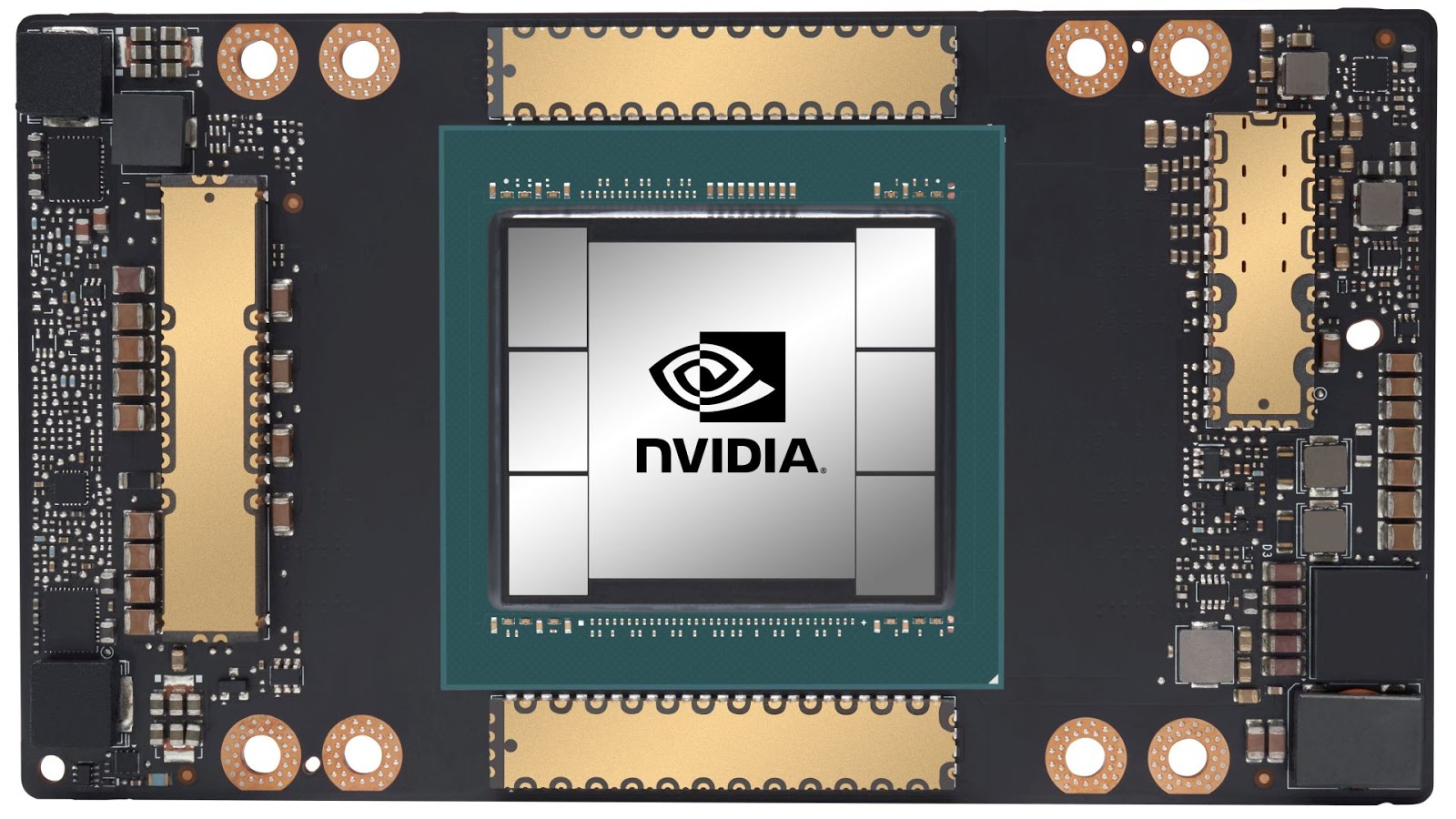Remember the clunky graphics of '90s video games? Now, look at the photorealistic worlds in today's games or the incredible power of a generative AI model. What's the secret sauce that connects these two seemingly different worlds? The Graphics Processing Unit (GPU).
This is the story of how a company built a piece of hardware for gamers that, by a twist of fate, became the engine of the AI revolution.
The Backstory: A Vision Born at a Denny's
 The tale of NVIDIA begins in 1993, at a Denny's diner in San Jose, California. Three co-founders, Jensen Huang, Chris Malachowsky, and Curtis Priem, were sketching out a grand vision. At the time, computers struggled with the massive calculations needed for realistic graphics. They realized that the future wasn't just in general-purpose CPUs, but in a new, specialized chip that could handle a specific, computationally-intensive problem: real-time 3D graphics.
The tale of NVIDIA begins in 1993, at a Denny's diner in San Jose, California. Three co-founders, Jensen Huang, Chris Malachowsky, and Curtis Priem, were sketching out a grand vision. At the time, computers struggled with the massive calculations needed for realistic graphics. They realized that the future wasn't just in general-purpose CPUs, but in a new, specialized chip that could handle a specific, computationally-intensive problem: real-time 3D graphics.
Their initial focus was laser-sharp: the video game market. As Jensen Huang later put it, they saw that "video games were simultaneously one of the most computationally challenging problems and would have incredibly high sales volume." This was their "killer app." They were among dozens of startups vying for this space, but by 1999, NVIDIA released the GeForce 256, which they dubbed the "world's first GPU." This chip was a game-changer because it introduced onboard hardware for transformation and lighting (T&L), offloading these crucial graphics tasks from the CPU and paving the way for the high-performance graphics we enjoy today.
The Difference: CPU vs. GPU
So, what makes a GPU so different from a traditional CPU? Think of it like a team of workers.
The CPU (Central Processing Unit) is like a small, elite team of super-smart, highly versatile engineers. They are incredibly fast at tackling complex, sequential tasks, one at a time. Their cores are big and powerful, designed for low-latency, serial processing. This makes them perfect for running your operating system, managing applications, and handling general-purpose tasks that require quick decision-making and logic.
The GPU (Graphics Processing Unit), on the other hand, is like a massive army of specialized workers. Each worker isn't as individually powerful as a CPU engineer, but there are thousands of them working together. Their cores are small and simple, designed for high-throughput parallel processing. They can't handle complex, sequential logic, but they are incredibly efficient at performing a huge number of similar, simple calculations simultaneously. This is known as parallel processing.
To achieve this parallel power, NVIDIA GPUs contain a variety of specialized cores:
CUDA Cores: These are the general-purpose "foot soldiers" of the GPU. They handle the vast majority of parallelizable tasks, from rendering pixels in a game to a wide range of scientific computations. They are highly efficient at breaking down a large problem into thousands of tiny, identical calculations.
RT Cores: Introduced with NVIDIA's RTX series, these cores are specialists in a rendering technique called ray tracing. Ray tracing simulates how light rays behave in a scene, creating incredibly realistic reflections, shadows, and refractions. While CUDA cores could do this, it would be extremely slow; RT cores are hardware-accelerated to perform the necessary calculations at blazing speed.
Tensor Cores: These are the rock stars of AI. Found on many modern NVIDIA GPUs, Tensor Cores are specifically designed for the type of matrix multiplications and accumulations that form the backbone of deep learning. They are significantly more efficient than CUDA cores for these specific operations, providing a massive performance boost for tasks like training and running neural networks.
For graphics, this parallel power is essential. Rendering a single frame in a video game requires performing the same calculations on millions of pixels and vertices. The GPU's architecture is perfectly suited to this task, making it a hundred times faster than a CPU for these types of workloads.
The Great AI Pivot: Why GPUs Excel at Deep Learning
For years, the GPU was the hero of the gaming world. But then, a new challenge emerged: Deep Learning.
Deep neural networks, the engine behind everything from image recognition to large language models like ChatGPT, are built on a foundation of linear algebra. Training these models involves performing billions, or even trillions, of matrix multiplications and other floating-point calculations. This is a highly parallelizable task. The same mathematical operation needs to be applied to millions of data points at once.
This is where the GPU's design shines. The very same architecture that makes a GPU perfect for rendering a scene with a million pixels also makes it perfect for training a neural network with a billion parameters. The GPU can break down these massive calculations into thousands of smaller, parallel tasks and distribute them across its thousands of cores.
Trying to train a large deep learning model on a CPU would be like having one super-smart engineer trying to do a thousand simple arithmetic problems by hand, one after another. It would take weeks, if not months. A GPU, however, can assign a team of a thousand workers to solve all those problems at the same time, reducing training time from weeks to hours or even minutes.
NVIDIA saw this opportunity and created the CUDA platform in 2006. CUDA is a software layer that allows developers to use the parallel processing power of NVIDIA GPUs for non-graphics tasks, including scientific research, data analytics, and, most importantly, AI and machine learning. This was the key that unlocked the GPU's potential beyond gaming, turning a graphics card company into the undisputed leader of the AI era.
